Choosing the Right Tarantula Enclosure
Setting up a tarantula enclosure is a crucial step in providing a healthy and happy environment for your eight-legged friend. The right enclosure not only ensures the tarantula’s well-being but also makes it easier for you to observe and care for it. Choosing the right enclosure involves considering several factors, including the size of the tarantula, its species, and your personal preferences. A well-chosen enclosure will allow your tarantula to thrive, providing the necessary space, ventilation, and security to promote a long and healthy life. This guide will help you make informed decisions, ensuring you create an ideal habitat for your pet tarantula, promoting its health and happiness while making tarantula keeping a rewarding experience.
Size Matters Understanding Tarantula Needs
One of the primary considerations when selecting a tarantula enclosure is its size. Tarantulas, like all creatures, need adequate space to move around, hunt, and feel secure. An enclosure that is too small can stress the tarantula, hindering its natural behaviors and potentially impacting its health. Conversely, an enclosure that is excessively large can make it difficult for the tarantula to find food and feel safe, which can lead to similar stress-related issues. Always take into account the adult size of the tarantula species you’re keeping. It’s better to err on the side of slightly larger rather than smaller, ensuring ample room for the spider to move, molt, and exhibit natural behaviors. The right size enclosure contributes significantly to the overall well-being of your tarantula.
Enclosure Height and Surface Area
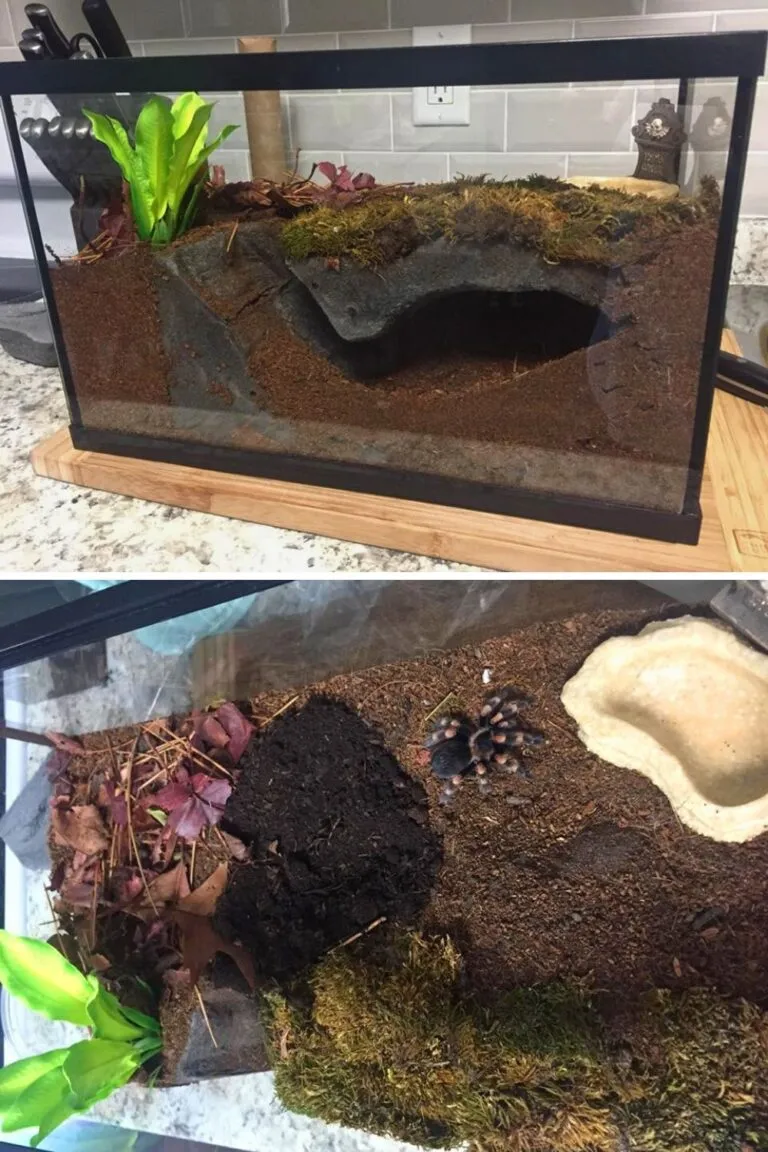
Beyond the overall dimensions, the height and surface area of the enclosure also play significant roles. Terrestrial tarantulas, those that spend most of their time on the ground, typically require more surface area than height. A wider enclosure provides them with more space to roam and hunt. Arboreal tarantulas, on the other hand, which are tree-dwelling species, benefit from a taller enclosure that allows them to climb and create webs. For terrestrial species, ensure the height isn’t excessive, as a fall from a great height can injure the tarantula. For arboreal species, provide ample climbing opportunities in the form of branches, cork bark, or other suitable décor. The proper balance of height and surface area is essential for creating a functional and enriching environment tailored to your tarantula’s specific needs.
Material Matters Glass vs Acrylic
The material of your tarantula enclosure is another critical consideration. Glass and acrylic are the two most common choices, each with its own set of advantages and disadvantages. Both materials can be used to provide a secure and safe environment for your tarantula, but their distinct properties affect their practicality and suitability. Your choice will depend on your budget, aesthetic preferences, and the specific requirements of your tarantula species. Careful consideration of these materials ensures you choose the option that best promotes your tarantula’s health and your enjoyment of the hobby.
Benefits of Glass Enclosures
Glass enclosures offer several benefits. They are generally scratch-resistant, maintaining their clarity over time and offering a clear view of your tarantula. Glass is also easy to clean and disinfect, which is crucial for maintaining a hygienic environment. They are also less likely to warp or bend, maintaining their structural integrity over time. Another advantage is that glass enclosures are usually heavier than their acrylic counterparts, which can make them more difficult for a tarantula to push over or escape from, providing enhanced security. Glass is also a more economical option, making it an attractive choice for those on a budget. Moreover, glass enclosures tend to be readily available in various sizes and styles, making it easy to find one that suits your specific needs.
Benefits of Acrylic Enclosures
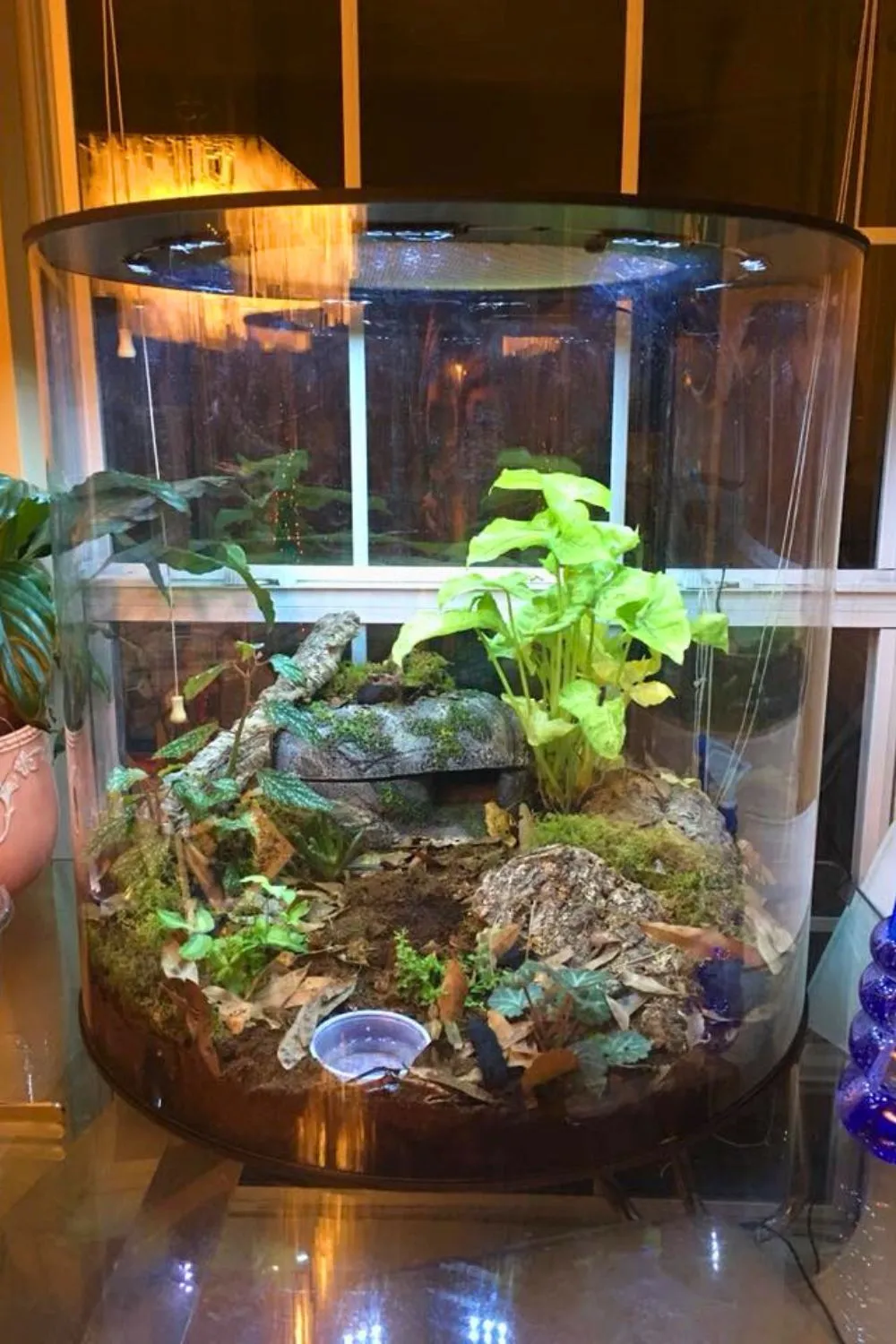
Acrylic enclosures boast some advantages over glass. Acrylic is much lighter, making them easier to handle and move around. They also offer superior insulation, which can help maintain consistent temperature and humidity levels inside the enclosure. Acrylic is less prone to shattering than glass, making it a safer option, especially if you have children or other pets. Acrylic enclosures are also available in various shapes and designs, providing more options for customization. This flexibility allows you to create a visually appealing habitat for your tarantula. Though they are more expensive than glass enclosures, their durability, clarity, and ability to maintain ideal environmental conditions make them popular among tarantula enthusiasts.
Creating the Perfect Tarantula Habitat
Once you’ve selected the right enclosure, the next step is to furnish it, creating a habitat that mimics the tarantula’s natural environment. This process involves careful consideration of substrate, moisture, temperature, and the inclusion of hides and decorations. Each element is vital in providing the tarantula with a secure, comfortable, and stimulating living space. A well-designed habitat not only enhances the tarantula’s well-being but also contributes to your enjoyment of the hobby. By understanding the needs of your specific tarantula species, you can create a thriving environment that allows your pet to exhibit its natural behaviors and thrive.
Substrate Selection Choosing the Right Bedding
The substrate is the bedding material that covers the bottom of the enclosure and serves several important purposes. It provides a surface for the tarantula to walk on, burrow in, and molt. Substrate also helps to maintain humidity levels and absorb waste, keeping the enclosure clean. The choice of substrate is species-dependent; for example, some species prefer a substrate that retains moisture well, while others need drier conditions. Commonly used substrates include coco fiber, peat moss, and various types of soil mixes. Coco fiber is popular for its excellent moisture retention and ability to maintain humidity. Peat moss provides a similar benefit, while soil mixes can be suitable for species that prefer a drier environment. Always choose a substrate that is safe, non-toxic, and appropriate for your tarantula’s specific needs, creating a comfortable and healthy living space.
Moisture and Humidity Balancing the Environment
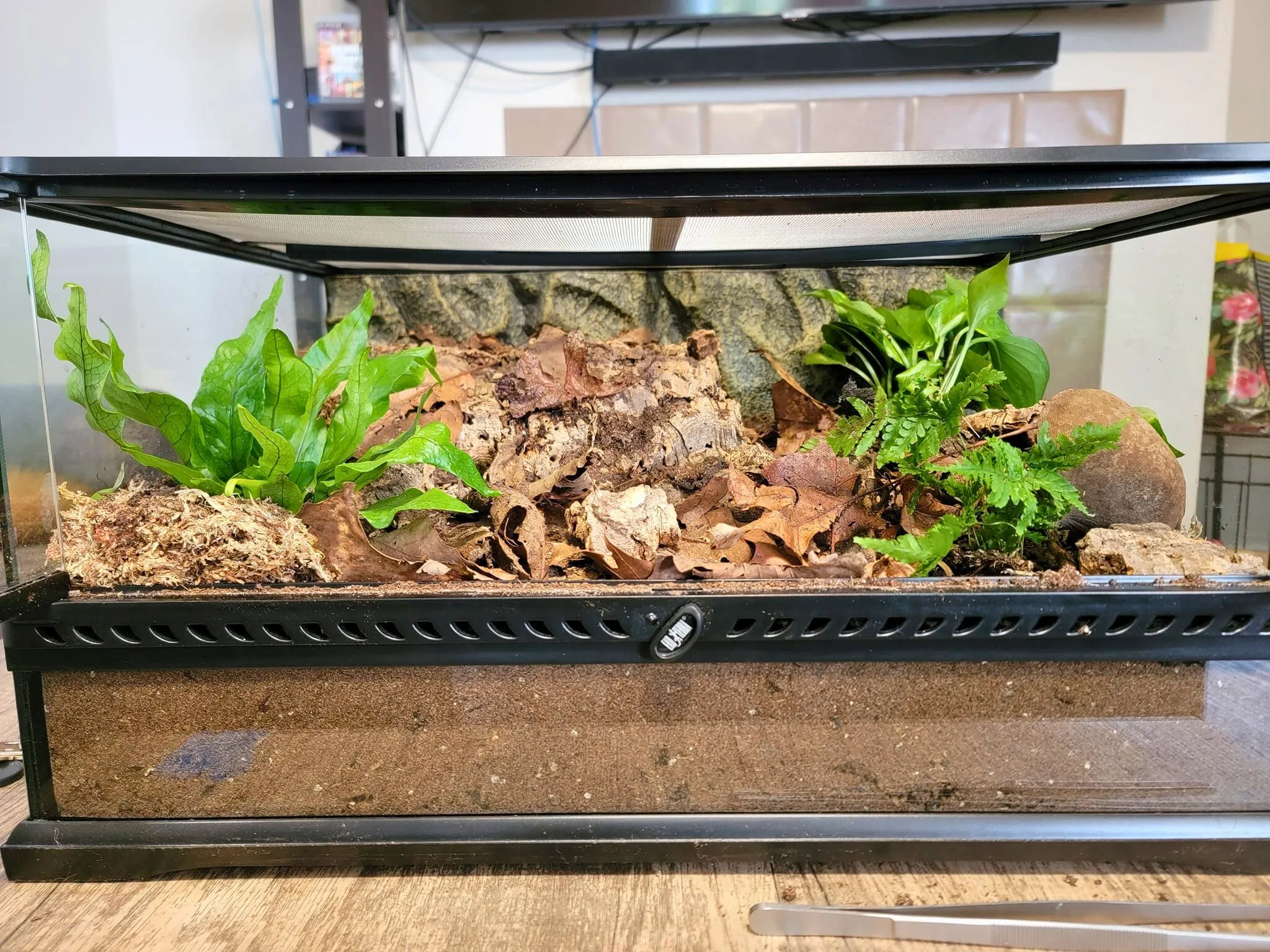
Maintaining the correct humidity levels is crucial for the health of your tarantula. Humidity is the amount of water vapor in the air and impacts the tarantula’s ability to molt successfully. Too much humidity can lead to mold and bacterial growth, while too little can cause molting issues and dehydration. The ideal humidity range varies depending on the species of tarantula. To monitor humidity, use a hygrometer placed inside the enclosure. You can increase humidity by misting the enclosure with water, providing a water dish, and using moisture-retaining substrates like coco fiber or peat moss. Ventilation is also essential to prevent the buildup of excessive moisture, so ensure that your enclosure has adequate airflow. Regularly monitoring and adjusting the humidity levels will ensure your tarantula has an environment that supports optimal health.
Water Dish and Hydration Ensuring Adequate Water
Providing a clean water source is essential for tarantula hydration. A water dish should be placed in the enclosure, allowing the tarantula to drink at will. The size of the water dish should be appropriate for the size of the tarantula; it should be shallow enough to prevent drowning and easily accessible. Regularly check the water dish and refill it with fresh, clean water to prevent contamination and dehydration. Some tarantula keepers also offer water-filled gel products or small droplets of water on the enclosure walls. Always ensure the water is clean and easily accessible for your tarantula, supporting its health and well-being.
Temperature and Heating Maintaining Optimal Conditions
Tarantulas are ectothermic animals, meaning they rely on external heat sources to regulate their body temperature. Maintaining the correct temperature range is crucial for their metabolism, digestion, and overall health. The ideal temperature range varies depending on the tarantula species, but most thrive in temperatures between 75-85°F (24-29°C). Use a thermometer to monitor the temperature inside the enclosure. In most cases, a room that is consistently within the acceptable temperature range is sufficient. If additional heating is necessary, use a heat mat placed on the side of the enclosure, never underneath, to prevent the substrate from drying out or overheating the tarantula. Avoid using heat lamps, as they can cause localized overheating and dehydration. Careful temperature control will ensure the health and comfort of your tarantula.
Providing Hides and Decorations Enrichment for Your Tarantula
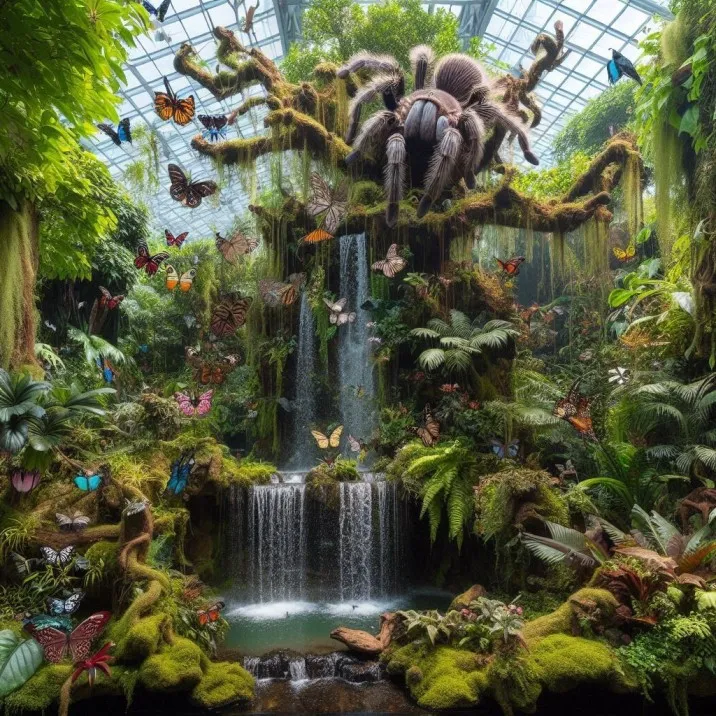
Enrichment is a critical aspect of tarantula care, as it provides the spider with a sense of security and a means to express natural behaviors. Hides are essential, providing a safe retreat where the tarantula can feel secure. Cork bark, half logs, or commercially available hides are all suitable options. The hide should be appropriately sized for the tarantula, allowing it to completely retreat inside. Decorations can also enhance the enclosure, providing additional enrichment. Artificial plants, branches, and other non-toxic items can be added to give the tarantula a more interesting environment. Be sure that any decorations are securely placed and do not pose a risk of injury. Providing a well-decorated enclosure not only improves the tarantula’s well-being but also allows you to observe its natural behaviors more closely.
Feeding and Maintaining Your Tarantula Enclosure
Once your tarantula enclosure is set up, ongoing maintenance is necessary to ensure the health and well-being of your pet. This includes regular cleaning, providing a suitable diet, and maintaining proper ventilation. Routine maintenance keeps the enclosure clean and prevents the build-up of harmful bacteria and waste products. A well-maintained enclosure provides your tarantula with a safe, healthy, and enriching environment.
Cleaning and Maintenance Keeping the Enclosure Tidy
Regular cleaning is important for maintaining a healthy tarantula enclosure. Remove any uneaten food, shed exoskeletons, and fecal matter promptly. Spot clean the substrate as needed, and completely replace the substrate every few months, depending on the species and the amount of waste produced. The frequency of substrate replacement will vary depending on factors like the size of the enclosure, the species of tarantula, and the humidity levels. When cleaning, use a mild disinfectant specifically designed for pet habitats, and always rinse thoroughly before returning the enclosure. Proper cleaning prevents the buildup of harmful bacteria, parasites, and unpleasant odors, keeping the environment safe for your tarantula and making the enclosure easier to maintain.
Feeding Schedule Providing the Right Diet
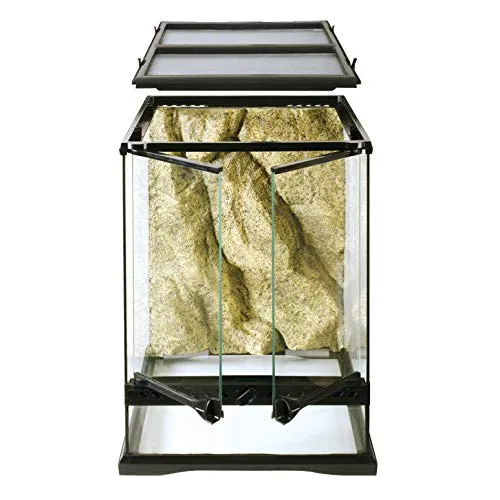
Feeding your tarantula a proper diet is essential for its health. Tarantulas are primarily insectivores, so their diet should consist of live insects. The type and size of insects will depend on the tarantula’s species and size. Crickets, roaches, mealworms, and other insects are common food sources. The feeding frequency will vary; younger tarantulas typically need to be fed more often than adults. Avoid overfeeding your tarantula; the abdomen should be rounded, but not excessively large. Remove uneaten insects after a day or two to prevent them from bothering the tarantula. By providing a varied and nutritious diet, you can support your tarantula’s growth and overall health.
Ventilation and Airflow Preventing Stagnation
Proper ventilation is crucial for maintaining a healthy environment in your tarantula enclosure. Adequate airflow prevents the buildup of excessive moisture, which can lead to mold, bacterial growth, and respiratory problems. The enclosure should have appropriate ventilation, usually provided through cross-ventilation via holes or mesh screens on the sides or top of the enclosure. The number and size of the ventilation holes depend on the species, size of the enclosure, and the humidity requirements. Ensure that the ventilation does not create excessive drafts, which can stress the tarantula. Monitoring the airflow and making necessary adjustments contributes significantly to maintaining a healthy and safe habitat.
By following these tips, you can create the best possible environment for your tarantula, ensuring its health, happiness, and well-being. Happy tarantula keeping!
